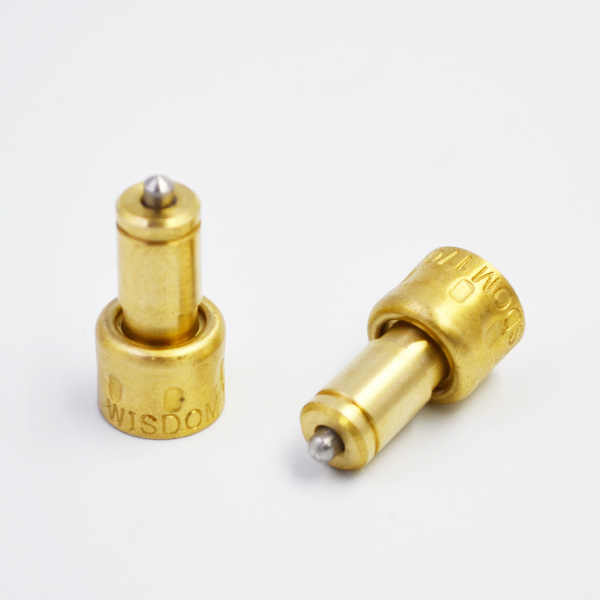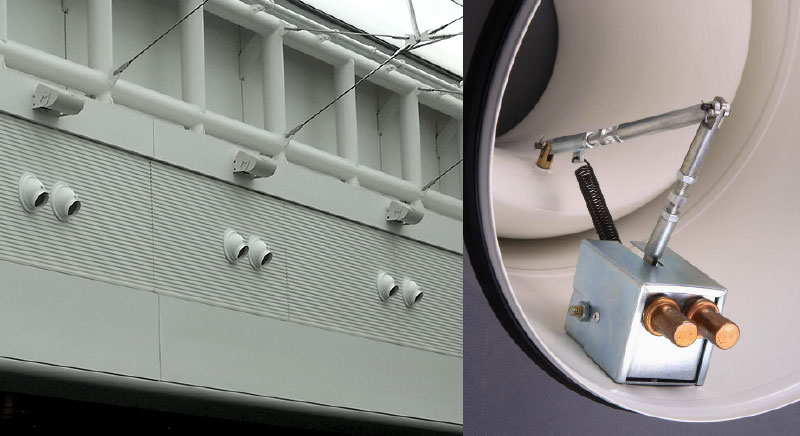Aiming at the problems of non-linearity, large lag and time-varying of water temperature change in aquatic greenhouse caused by large specific heat capacity of water body, thermostatic element considering the disadvantages of poor adaptive ability and weak robustness of traditional PID controller, a PID control strategy based on BP neural network is proposed. In this control strategy, the control parameters of PID can be adjusted in real time by neural network to achieve the best control effect. The control effects of traditional PID control strategy and neural network PID control strategy are simulated by using MATLAB software. The results show that the system based on BP neural network PID control has faster dynamic response, stronger robustness, higher steady-state accuracy, smaller overshoot and better control effect. In the aquaculture industry, the temperature of aquaculture water has been closely related to the growth and yield of fish. In the actual aquaculture process, water temperature is generally controlled within a set range to meet the maximization of fish production and optimization of energy consumption. In recent years, greenhouse aquaculture has gradually replaced open-air aquaculture because of its good heat preservation performance. It shows good comprehensive effect in both high temperature summer and severe cold winter. However, in winter, aquatic greenhouse is facing a big problem. Because of the characteristics of large specific heat capacity, large lag and large time-varying, water temperature is often difficult to control. Scholars at home and abroad have done a lot of research on temperature control strategy, but they are basically concentrated in plant greenhouses. The controlled quantity of the plant greenhouse is the air temperature in the greenhouse.
Because the specific heat capacity of the air is small, it is easy to control the temperature within the required range in a short time through the corresponding control strategy. Because of the huge difference of specific heat capacity between air and water, the control strategies that plant greenhouse can apply in aquaculture greenhouse are often inappropriate and difficult to meet the control requirements. The traditional method of water temperature control is PID control, which is relatively simple but has a limitation. If the parameters of the controlled system are time-varying, the control effect will be significantly affected, and the control will have a large lag. Especially in the control of aquatic greenhouse, because of the large specific heat capacity of water body, the traditional PID control is no longer applicable. The neural network [2] used by the author is adaptive and self learning. It can realize on-line real-time adjustment of control parameters and achieve satisfactory control level. In winter, the heat source of heating aquaculture greenhouse is mainly solar radiation and external heat source. The heat loss mainly occurs in the process of convective heat transfer between plastic film and external air, and heat transfer between water and soil in greenhouse. In the process of modeling, the following simplifications are made: the surface area of greenhouse occupies about 5% of the total greenhouse area, so the influence of the wall and road on the greenhouse thermal environment is neglected; the metabolic heat production of organisms in the pond is neglected; the isotropy of outer membrane, inner membrane, indoor air, water and soil is neglected; the heat transfer effect in the walls at both ends of the greenhouse is neglected; the heat accumulation caused by the change of the temperature of inner and outer membrane is neglect There is only one-dimensional conduction and heat transfer in the vertical direction without considering the change of soil moisture content. The key to the effect of PID control lies in the adjustment of its own three parameters, i.e. proportion, integral and differential. These three parameters need to cooperate and restrict each other. However, this relationship is not necessarily a simple “linear combination”. Therefore, it is very difficult to find this relationship by traditional methods, but it is not very accurate and the control results are not ideal. Neural network has the ability of arbitrary non-linearity expression, and the PID control with the best combination can be realized by learning the performance of the system.
Back Propagation (BP) neural network [5] was proposed by Rumelhart and McCelland in 1986. It is a multi-layer feedforward network trained by error back propagation algorithm. It is the most widely used neural network at present. BP network has the ability to learn and store a large number of input-output schema mapping relationships without requiring the prior disclosure of the mapping relationship. Its learning rule is to use the steepest descent method to adjust the weights and thresholds of the network through back propagation, so as to minimize the sum of squares of errors of the network. The topological structure of BP neural network model includes input layer, hidden layer and output layer. The structure is generally shown in Figure 1 [6]. BP neural network PID control is a new type of controller which integrates the PID control law into the neural network. In this study, BP neural network PID control uses three-layer grid, structure is 453, learning rate is 0.1, inertia coefficient is 0.01.

Initial weights between layers are random numbers on [-0.5, 0.5]. Input signals of input layer are input value R (k), output value y (k), error value E (k) and unit 1. The process of parameter self-tuning is as follows [7]: Rin (k) and yout (k) are sampled and error (k) = Rin (k) – yout (k) is calculated. The input and output of neurons in each layer of the neural network are calculated, and the output of the NN output layer is the three adjustable parameters of the PID control. The output u (k) of the PID controller is calculated, the neural network is learned, the weighting coefficient is adjusted online, and the adaptive adjustment of the PID parameters is realized. The object of the study is a large aquaculture greenhouse in a certain area. The length and width of the greenhouse are 107 m *50 m, and the ridge height of the greenhouse is 3.82 M. There are eight 22 m *22 m aquaculture ponds with rounded corners of 5 m in the room. Eight ponds are divided into two rows, and the spacing between the two drainage ponds is 3.50 M. The greenhouse is covered with a double-layer PVC plastic film with a thickness of 0.001 M. The distance between the two films is 055 m, and the thickness of the soil layer is 1.00 M. In order to evaluate the performance of the traditional PID controller and the neural network PID controller, the control effects of the two controllers are simulated, and the simulation results are evaluated with the corresponding control indicators [8-9].

The control parameters of the traditional PID controller are fixed by the stable boundary method [10]. Neural network PID uses its self adaptability and self-learning habits to carry out real-time online tuning of parameters. The simulation results of the two control systems are shown in figs. 3-6. From Figure 3 and Table 1, it can be seen that the overshoot of PID control based on BP neural network is much smaller than that of conventional PID control. The overshoot of BPNNPID control is 18%, which will not cause great fluctuation of the system, while the overshoot of conventional PID control is 80%, and the fluctuation of the system is intense.

The transition time of BPNNPID control is 400 seconds, and that of conventional PID is 1 000 seconds. It can be seen that BPNNPID control can quickly reach a stable state. The attenuation rate is much smaller than the conventional PID, and the control is relatively stable. The two control methods have almost no static error, and the control effect can meet the control requirements.
The error curves of conventional PID control and BP neural network PID control are shown in Fig. 4. The PID control based on BP neural network is obviously more stable than the conventional PID control. The fluctuation is very small, and the time to achieve stability is obviously shorter than the conventional PID control, which has better control effect. The PID control based on BP neural network has the advantages of self-learning and self adaptability, and adjusts the PID control coefficient online. The result of parameter adjustment is shown in Figure 5. It can be seen that BP neural network PID control can realize on-line adjustment of control parameters to ensure the optimal control effect. Figure 6 shows that the performance of PID control based on BP neural network is better than that of conventional PID control when the system is disturbed by external disturbances in 1000s. After external disturbance, the fluctuation of BP neural network PID control system is much smaller than that of conventional PID control, and the time to return to stable state is much shorter than that of conventional PID control.

BPNNPID takes about 200 seconds and conventional PID needs 500 seconds. Neural network-based PID control has stronger robustness, stronger anti-jamming ability, timely control effect on some uncertain disturbances, and stronger adaptive ability. Aquaculture greenhouse control system is a large delay, inertia, time-varying and non-linear controlled object.

Compared with civil buildings and plant greenhouses, it is more difficult to control. Traditional PID control system is difficult to ensure control quality. The research combines the BP neural network with the classical incremental PID controller. The BP neural network PID controller is designed by using the BP neural network’s strong self-learning habits and nonlinear approximation characteristics, so that the control parameters of the PID controller can be adjusted online to achieve satisfactory control quality. By comparing the simulation results of traditional PID control and BP neural network PID control, it can be concluded that the PID tuned by BP neural network has better control effect.
Its dynamic process overshoot and transition time are better than those of conventional control. It has the characteristics of simple structure, high steady-state accuracy, short transition time, strong anti-interference ability, good robustness and strong self-adaptive ability, which make up for the traditional PID control. The parameters of greenhouse temperature control are difficult to tune and the control effect is not ideal, so it has certain popularization value to apply it to aquatic greenhouse.
